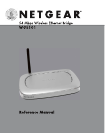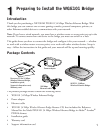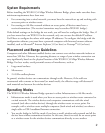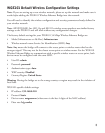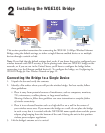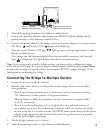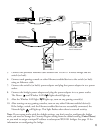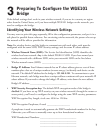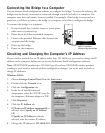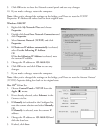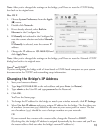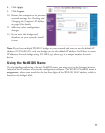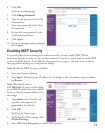
System Requirements
Before installing the WGE101 54 Mbps Wireless Ethernet Bridge, please make sure that these
minimum requirements have been met:
• For connecting into a wired network, you must have the network set up and working with
an access point or wireless router.
• For creating an Ad-Hoc network without an access point, all devices must have a
receiver/transmitter. (The receiver/transmitter may be another WGE101 bridge.)
If the default settings on the bridge do not work, you will need to configure the bridge. Also, if
you have more than one WGE101 in the network, only one can use the default IP address.
You’ll have to configure the others with unique IP addresses. To configure the bridge with the
configuration software, you must have a personal computer with Internet browser software
installed, such as Microsoft
®
Internet Explorer 5.0 (or later) or Netscape
®
6.0 (or later).
Placement and Range Guidelines
Computers and other Ethernet-enabled devices can connect over wireless networks indoors at
more than 500 feet. However, the operating distance or range of your wireless connection can
vary significantly based on the physical location of the WGE101 54 Mbps Wireless Ethernet
Bridge. For best results, avoid potential sources of interference, such as:
• Large metal surfaces
• Microwaves
• 2.4 GHz cordless phones
In general, wireless devices can communicate through walls. However, if the walls are
constructed with concrete or have metal (or metal mesh), the effective range will decrease if
such materials are between the wireless devices.
Operating Modes
The WGE101 Wireless Ethernet Bridge operates in either Infrastructure or Ad-Hoc mode.
• Infrastructure mode is used when you have an access point or wireless router connected to
a wired network. The wireless devices and computers communicate with the wired
network (and other wireless devices) through the wireless router or access point. For
example, with a wireless router multiple computers (both wired and wireless) can share a
single cable or DSL broadband Internet connection.
• You use the bridge in Ad-Hoc mode if you have a small, wireless-only network and all the
devices have wireless transmitters/receivers. In this case, there’s no need for an access point
or a wireless router for the wireless devices communicate directly to one another.
2



